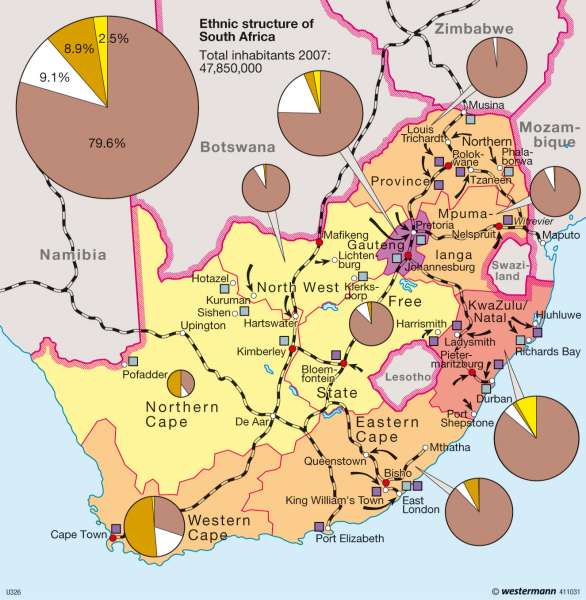South Africa — Population 2007
Africa - Countries and history
978-3-14-100790-9 | Page 155 | Ill. 6

Information
Following the abolishment of Apartheid law in 1991 and the first free democratic elections in 1994, profound social-spatial changes took place in South Africa. Members of the traditionally political and economically disadvantaged non-white population, consisting of Blacks, Coloureds (people with black and white ancestry) and Asians (mostly Indian) now enjoy the right to live where they choose. These communities are therefore entitled to live in residential areas that were previously declared "white". The reverse scenario, i.e. white people living in residential areas that were previously reserved solely for black people, is virtually non-existent. Today, "white" and "non-white" residential areas usually form communal units, which in effect, have seen segregation of the population remaining unchanged.Social ramifications of the abolishment of Apartheid
Officially referred to as "Affirmative Action", the preferential treatment of non-whites for positions in the civil service and targeted social pressure on the private economic sector, has improved the social standing of traditionally disadvantaged groups in comparison to decades of Apartheid. However, to date, the general populace has only gained moderately from these changes.
The black middle-class continues to be very small and, at the same time, the social gap between the winners and losers of post-apartheid continues to grow. Prospects of lucrative work and social improvement present themselves primarily in the big South African cities. For this reason, the most deprived, often from rural regions where unemployment rates of up to 80 percent prevail, are also drawn to these cities. Migration restrictions that were enforced during Apartheid ("Influx Control"), no longer exist today.
U. Jürgens; Ü: J. Moar, C. Fleming




